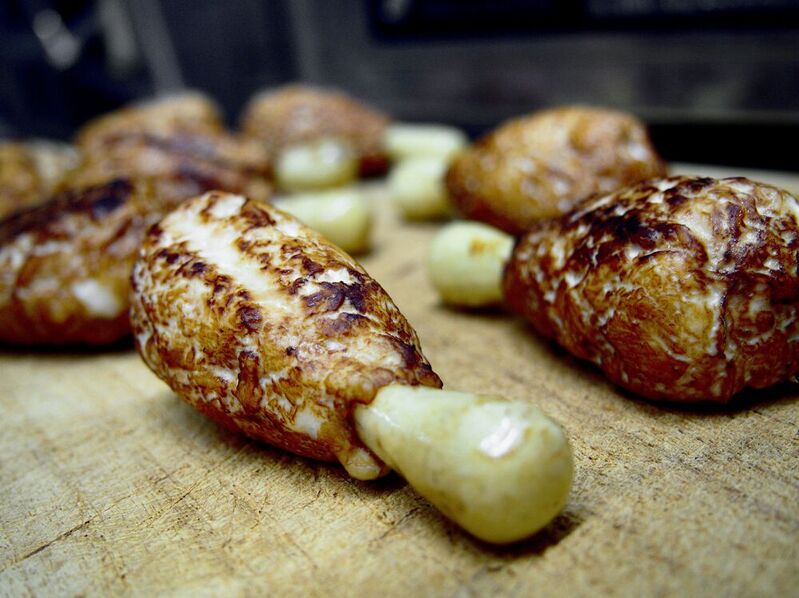
Sustainability is also a major challenge in the food and packaging industry. Plastic packaging is being replaced by organic-based and biodegradable materials, but it must still fulfill high functional requirements. For example, both the product and the packaging must be safely protected from the migration of gas and moisture.
This innovative and universally versatile protective layer was originally developed for use in foodstuffs as a heat-resistant barrier to moisture. So-called “crumbsticks” were created as part of a product development competition. These are chicken drumsticks with an edible bone made from crispy baked bread sticks. A softening of the two components, which both have a different moisture content, was prevented using the described coating system, which was developed especially for this application.
In the further course of the research, however, additional application possibilities became apparent, especially in fields such as sustainable, organic-based packaging systems. In this case, the coating system is sprayed on and, together with an organic-based carrier material, produces a water-resistant and gas-resistant package.
The scientists at Hohenheim used oleogels in the development of this consumable protective layer. These are fats that are structured using certain gelling agents. The use of some of these is already established in the food sector, for example in the substitution of animal fats and palm oil. What is new, however, is their use as heat-resistant coating to prevent the migration of water within a food product or from a food product into the packaging material.
Existing production processes, mainly from packaging & polymer technology, can be used to create oleogels. The layer of coating can be applied either by glazing, laminating, coating, or spraying and is suitable for food as well as the food packaging field or convenience food packaging. Applications in the pet food sector are also conceivable.
The innovative material can be used in the food sector to separate components with different characteristics. Many processed foods are multi-component systems which are defined by different properties. These include many snack and convenience food products, which often have a dry and a moist (creamy) component. During the production and storage of these products, care must be taken to ensure that moisture from one ingredient is not absorbed into the dry areas of the product. This can be prevented using the protective layer made from oleogel. Even during production processes such as baking or frying, the characteristics of the individual components of the food are retained.

Another application for this coating material is the animal feed sector. Here, too, numerous possible applications are conceivable, such as coating the packaging to protect against moisture, or also separating individual components of the feed.
This new coating exhibits several properties, the combination of which has not been possible before: It is water-resistant, heat-resistant, and mechanically durable while still being edible. By changing the composition or including additives (such as flavorings or colorants), the oleogel layer can be adapted to the specific application. The composition of the oleogel is purely plant-based due to the use of vegetable oils and ethyl cellulose.
The EP patent applications (EP 21207193.0) are pending. Technologie-Lizenz-Büro (TLB) GmbH supports the University of Hohenheim and its scientists in patenting and marketing its current innovation. TLB has been commissioned with the exploitation of this pioneering technology and offers companies possibilities to cooperate and license the patents.
For more detailed information, please contact Innovation Manager Dr. Dirk Windisch (windisch@tlb.de)
Source
TLB, press release, 2023-05-03.
Supplier
Technologie Lizenz-Büro (TLB) der Baden-Württembergischen Hochschulen GmbH
Universität Hohenheim
Share
Renewable Carbon News – Daily Newsletter
Subscribe to our daily email newsletter – the world's leading newsletter on renewable materials and chemicals









